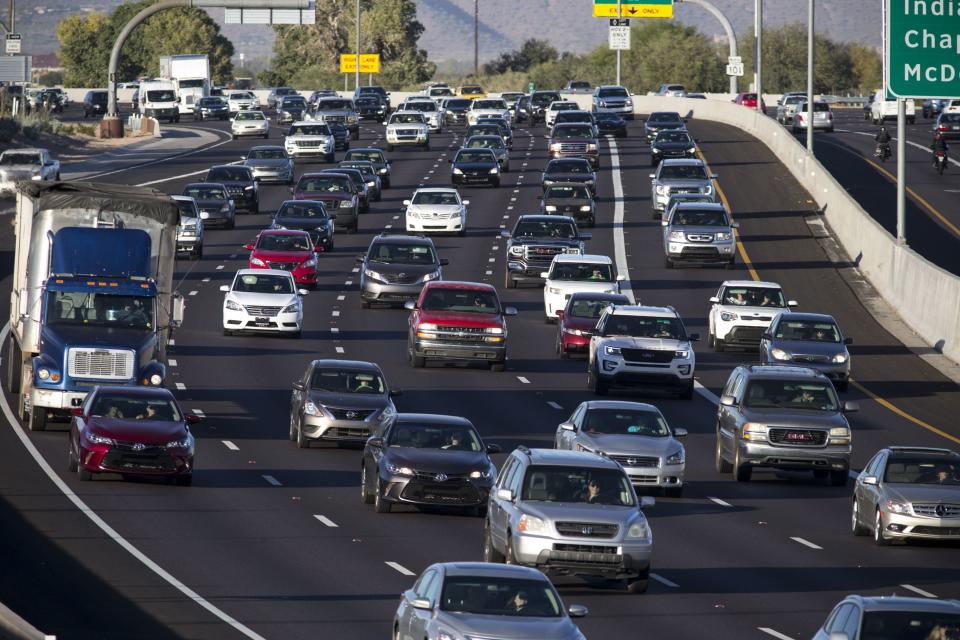State of the Air: How did Volusia, Flagler score in American Lung Association report?
Breathe easy, friends and neighbors.
Volusia and Flagler counties both received an “A” grade in the American Lung Association’s annual “State of the Air” report released this week.
The 24th annual national report grades Americans’ exposure to unhealthy levels of ground-level ozone air pollution, annual particle pollution, and short-term spikes in particle pollution over a three-year period. This year’s report covers 2019-2021.
Here’s what you need to know:
How did Volusia, Flagler cities score for air quality?
The metropolitan of Orlando-Lakeland-Deltona ― an area that also includes Daytona Beach ― was tied for first as the cleanest metropolitan area in the country for 24-hour particle pollution. It ranked at 65 for high ozone days out of 227 metropolitan areas; and at 106 for annual particle pollution out of 200 metropolitan areas.

The metropolitan area of Jacksonville-St. Marys (Ga.)-Palatka ― which encompasses Palm Coast and St. Augustine ― was tied for 1st as the cleanest metropolitan area in the country for ozone. It ranked at 118 for 24-hour particle pollution out of 223 metropolitan areas; and ranked at 89 for annual particle pollution out of 200 metropolitan areas.
How did Florida air quality score overall?
Statewide, 35 out of 67 counties provided data that the Lung Association could grade for at least one measure of air quality.
From 2019: Florida environmental fines dip by half in a decade
In the category of high ozone days, 26 counties received “A” grades, including Volusia, Flagler, Orange, Seminole and Brevard. Seven counties received “B” grades, one county (Osceola) received a “C,” with Hillsborough logged lowest score, a “D.”
For particle pollution, 16 of out of 67 counties reported data, with Volusia among 10 counties scoring an “A” grade. Five counties scored a “B,” including Hillsborough and Miami-Dade. Broward scored the lowest in this category, with a “C.”
Where are the cleanest places to live for air quality?
Nationally, seven cities rank on all three of the study’s cleanest cities lists for particle pollution and ozone. They had zero days high in particle pollution or ozone and are among the 25 cities with the lowest year-round particle levels.
Listed alphabetically, they are:
Asheville-Marion-Brevard, North Carolina
Bangor, Maine
Greenville-Kinston-Washington, North Carolina
Lincoln-Beatrice, Nebraska
Rochester-Batavia-Seneca Falls, New York
Urban Honolulu, Hawaii
Wilmington, North Carolina
Where are the most polluted places to live for air quality?
Nationally, California dominates the top of the study’s ranking of the most polluted places to live.
Bakersfield, California, is ranked as the most polluted city in both short-term and year-round particle pollution.
It’s also ranked at No. 3 in ozone pollution behind Los Angeles-Long Beach and Visalia, California. Rounding out the Top 5 in most polluted ozone list is Fresno-Madera-Hanford, California and Phoenix-Mesa, Arizona.
Fresno also ranks at No. 2 in short-term particle pollution and No. 3 in year-round particle pollution.
The rest of the short-term particle Top 5 includes Fairbanks, Alaska; Visalia; and Reno-Carson City-Fernley, Nevada.
Visalia, Los Angeles and Fairbanks also made the year-round particle Top 5.
Where can I look at the study?
You can find the study report at the American Lung Association website, lung.org.
This article originally appeared on The Daytona Beach News-Journal: How did Volusia, Flagler counties score on ozone, particle pollution

